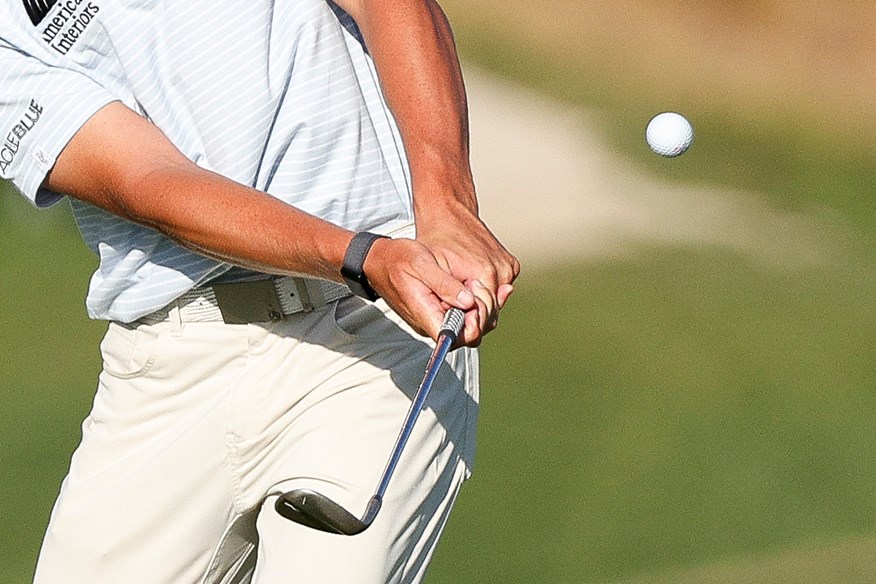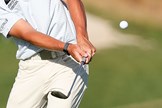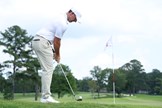These two golf balls could be killing your short game
Published:
Robot testing shows that two popular golf balls spin up to 70% less on short shots – and it could be costing you around the green.
When you’re looking for the best golf balls, it’s easy to become obsessed with driver and iron performance. After all, you want a ball that flies like a rocket off the tee and lands like a butterfly with sore feet on iron shots, right?
Well, yes, but being able to control your ball on those score-saving short shots is just as important.
It was short game performance that made Rory McIlroy switch golf balls earlier this year.
“I just started to hit some chip shots with the TP5 instead of the TP5x and I really loved how it felt,” he said. “I loved how it was reacting around the green. Then I started hitting some 60, 70-yard shots and it was coming off much lower launch but spinnier.”

The switch helped McIlroy improve his short game perfromance in a year that’s seen him win three times, complete the career Grand Slam, and lead Europe to a famous away Ryder Cup victory at Bethpage Black.
Having a golf ball that performs well on full shots but lets you down around the green is like painting a masterpiece and smudging it as you sign your name.
That’s why, this year, for the first time, we added a 40-yard pitch shot to our industry-leading Robot Golf Ball Test.
We’ve always measured spin rates on full shots, but golf balls react differently to different shot types – a ball that spins a lot with a driver or 7-iron might not necessarily spin a lot with a short shot.
And if you think that there can’t be much difference in performance between golf balls on such short shots, think again – our testing showed some balls span 72% more than others.
So which balls could be letting you down when it comes to the short game?
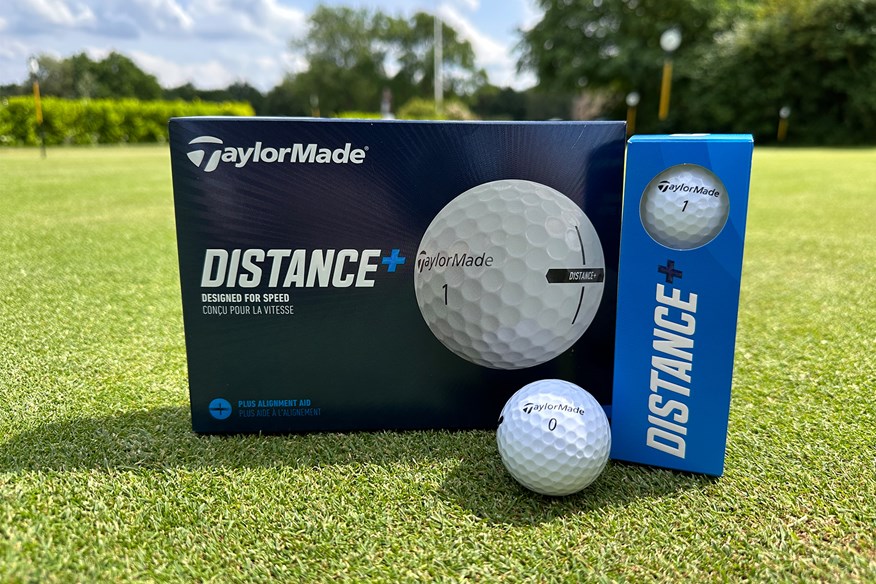
TaylorMade Distance+
The TaylorMade Distance+ delivered the lowest spin of all 62 balls tested when it came to a 40-yard pitch shot.
Its 3,685rpm spin rate was 2,002rpm (35.2%) lower than the test average.
That lack of spin means less stopping power on chips and pitches. On firm summer greens, you will get much more roll out than you would with a tour-level urethane ball.
The Distance+ is designed for distance and durability, which makes sense when many higher-handicap golfers prioritise those things above being able to hit spinny chip shots. But if you pride yourself on touch shots, that ionomer cover struggling to grab the green can quickly become your enemy.
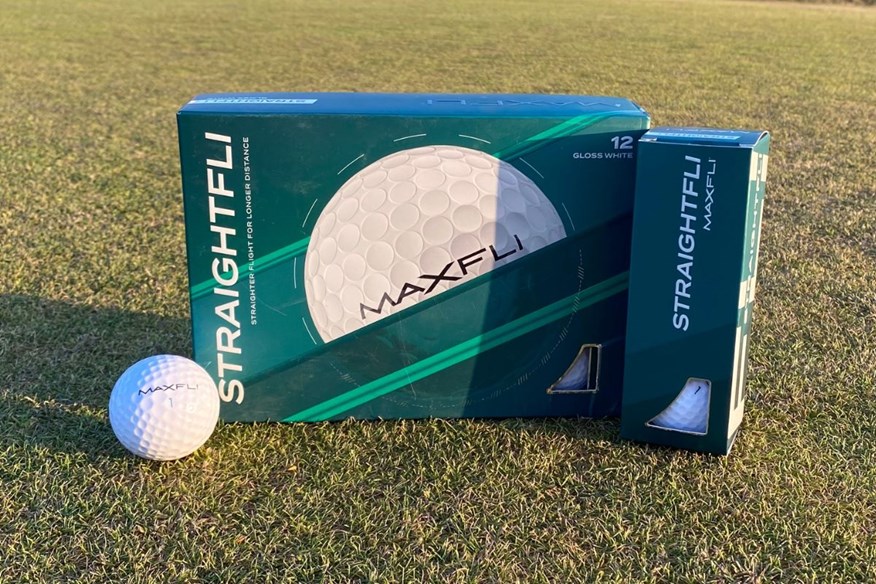
Maxfli StraightFli
The Maxfli StraightFli only did slightly better, with a spin rate of 3,742rpm.
It’s marketed for maximum accuracy off the tee, and while its dimple pattern may help reduce sidespin with a driver, it also limits the friction you need around the greens.
On a 40-yard pitch, that means it’ll land hot and run out further – fine for bump-and-run style shots, but not ideal if you’re trying to attack tucked pins or stop it quickly.
When we compared expensive vs. cheap golf balls, the Maxfli StraightFli punched well above its weight with driver and irons, but the lack of spin on shorter shots is a concern.

What does “good” short-game spin look like?
For comparison, premium urethane balls like the Callaway Chrome Tour, TaylorMade TP5, and Bridgestone Tour B XS all generated over 6,000pm of spin on the same 40-yard shot, while the Callaway Chrome Tour X generated more spin than any other ball at 6,343rpm. That’s nearly double the spin of these distance-focused models – and the difference is immediately noticeable in feel and control.
Of course, it’s not really a fair fight, as the TaylorMade Distance+ and Maxfli StraightFli are budget options that cost less than half what you pay for premium golf balls – for plenty of golfers, that’s reason enough to play them.
And golfers who only play bump-and-run shots might not need maximum spin. But a ball that spins too little is making life much harder than it needs to be. And remember: we tested the balls in perfect conditions. Add in things that reduce spin – like long grass, moisture, or an imperfect strike – and your actual spin rate is likely to be even lower.
So, if you often find yourself watching pitch shots scuttle past the flag, maybe it’s time to stop blaming the greens or your technique… It could be your golf ball.
| Golf ball | Backspin (rpm) |
|---|---|
| Callaway Chrome Tour X | 6343 |
| Srixon Z-Star Diamond | 6137 |
| TaylorMade TP5 | 6100 |
| Wilson Staff Model X | 6091 |
| Vice Pro Plus | 6090 |
| Titleist Tour Soft | 6075 |
| Kirkland Signature V3.0 | 6050 |
| TaylorMade TP5x | 6042 |
| Bridgestone Tour B XS | 6036 |
| Callaway Chrome Tour | 6036 |
| Maxfli Tour X | 6028 |
| Wilson Staff Model | 5993 |
| Bridgestone Tour B X | 5972 |
| Vice Tour | 5967 |
| Callaway Warbird+ | 5963 |
| PXG Tour X | 5961 |
| Mizuno RB 566 | 5960 |
| Titleist Pro V1x | 5952 |
| Bridgestone e12 Speed | 5951 |
| Srixon Z-Star XV | 5948 |
| Srixon Z-Star | 5926 |
| PXG Tour | 5870 |
| Seed SD-01 | 5867 |
| Callaway Chrome Tour Triple Diamond | 5867 |
| Seed SD-02 | 5845 |
| Maxfli TriFli | 5831 |
| Mizuno Pro X | 5792 |
| Titleist Velocity | 5789 |
| Seed SD-X1 | 5782 |
| Pinnacle Rush | 5746 |
| Vice Pro | 5708 |
| Bridgestone Tour B RXS | 5702 |
| Titleist Pro V1 | 5692 |
| Srixon Q-Star (AD333) | 5674 |
| Seed SD-15 | 5667 |
| Mizuno Pro S | 5655 |
| Bridgestone Tour B RX | 5645 |
| Maxfli Tour | 5634 |
| Titleist Pro V1x Left Dash | 5631 |
| Seed SD-05 | 5618 |
| TaylorMade SpeedSoft | 5596 |
| Callaway ERC Soft | 5592 |
| Srixon Q-Star Tour | 5575 |
| Srixon Soft Feel | 5559 |
| Bridgestone e12 Straight | 5556 |
| Wilson Triad | 5554 |
| Titleist TruFeel | 5553 |
| Bridgestone e6 Soft Feel | 5551 |
| Maxfli Tour S | 5541 |
| Callaway Chrome Soft | 5518 |
| Callaway Supersoft | 5500 |
| Vice Drive | 5492 |
| Wilson Duo Soft | 5442 |
| Bridgestone e12 HiLaunch | 5437 |
| Maxfli SoftFli | 5432 |
| Vice Pro Air | 5371 |
| TaylorMade Tour Response | 5353 |
| Pinnacle Soft | 5327 |
| Titleist AVX | 5318 |
| Srixon UltiSoft | 5286 |
| Maxfli StraightFli | 3742 |
| TaylorMade Distance | 3685 |
